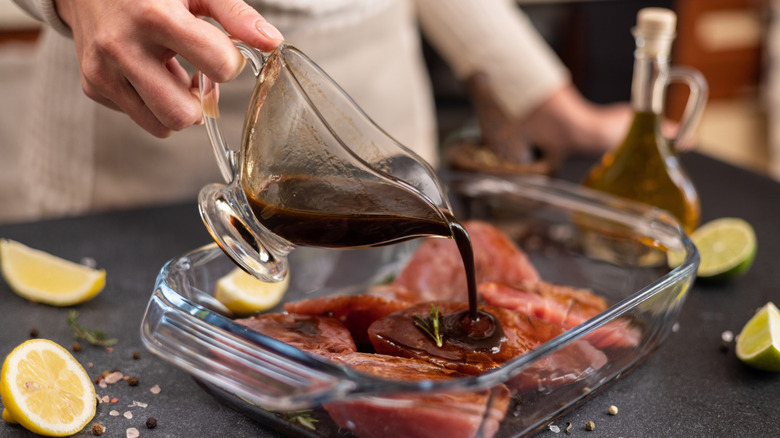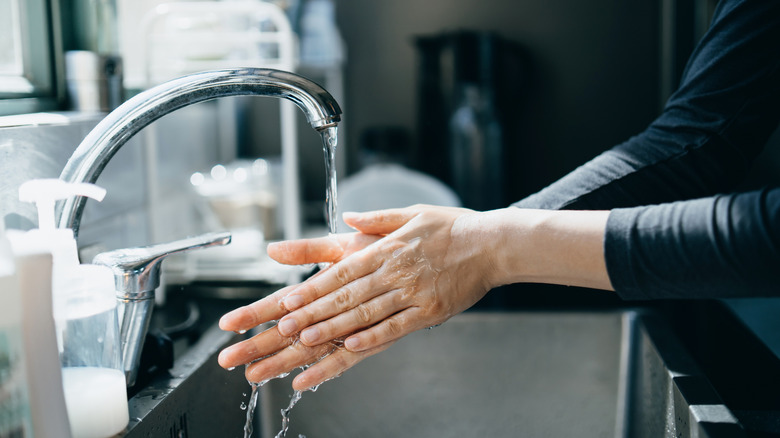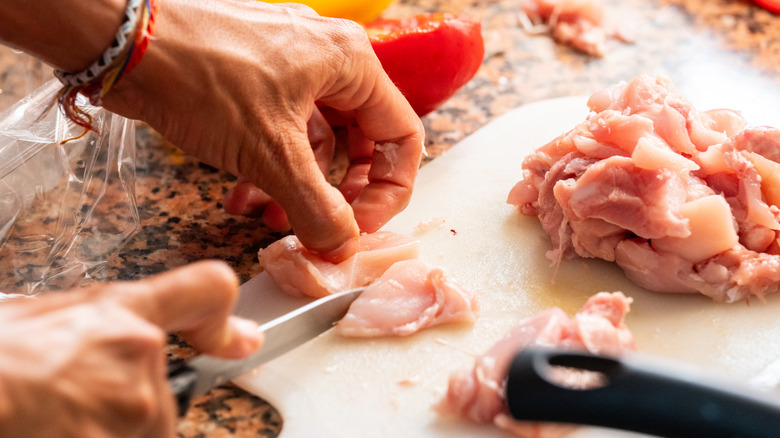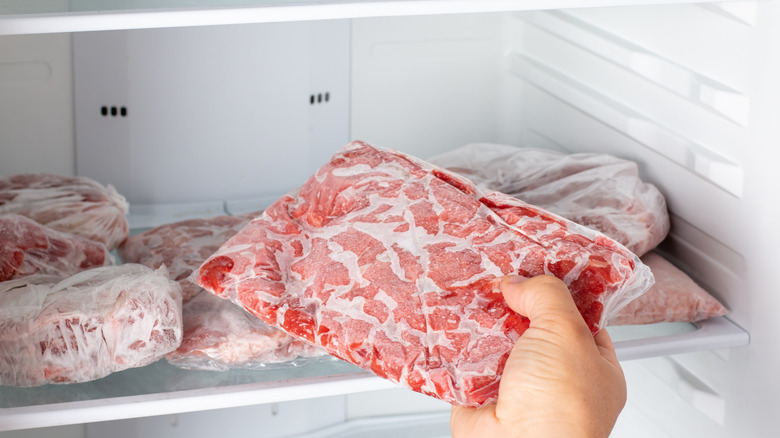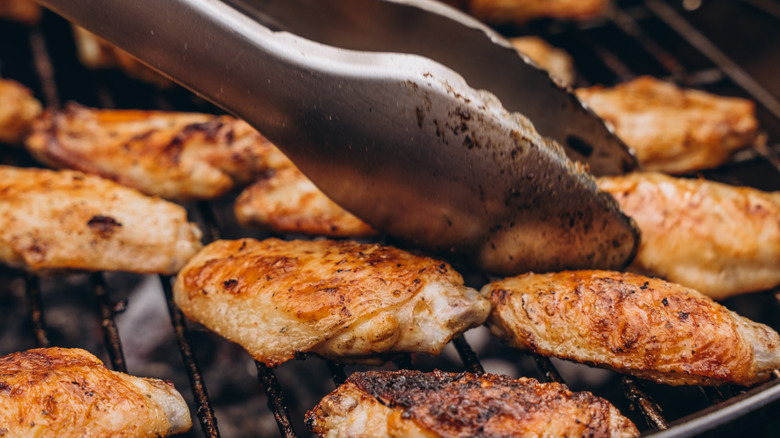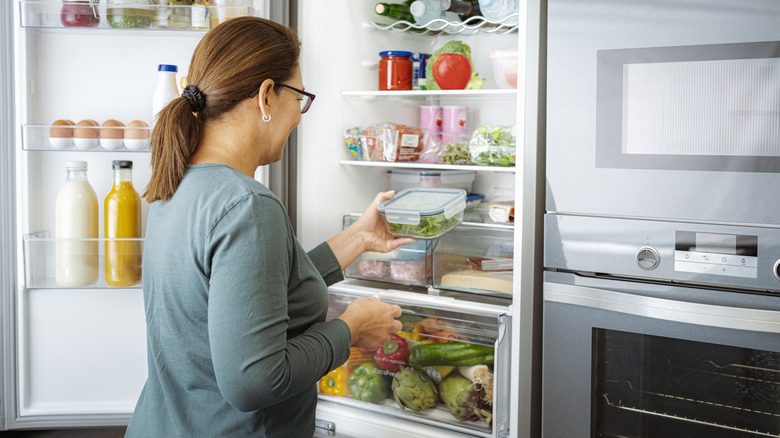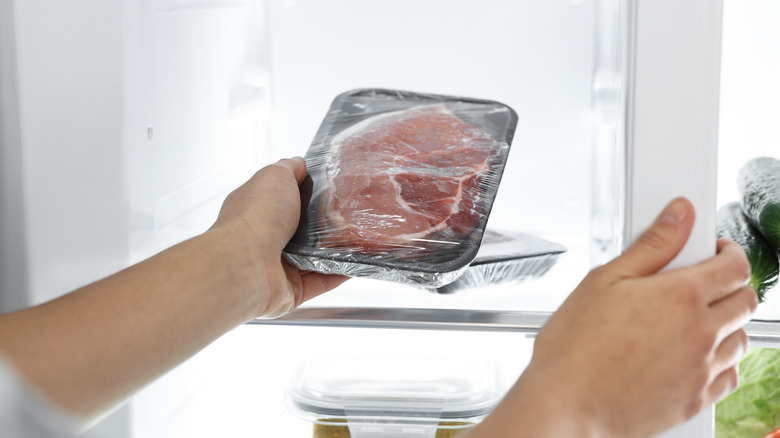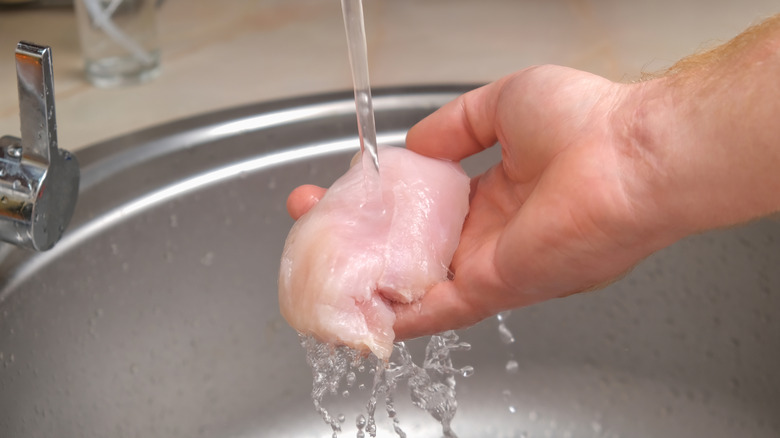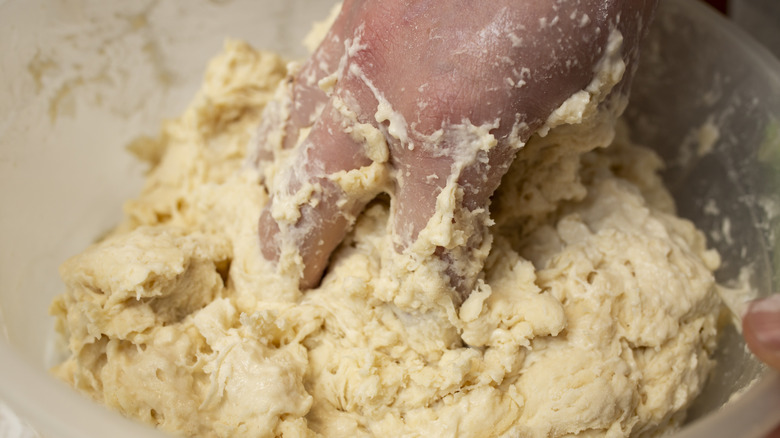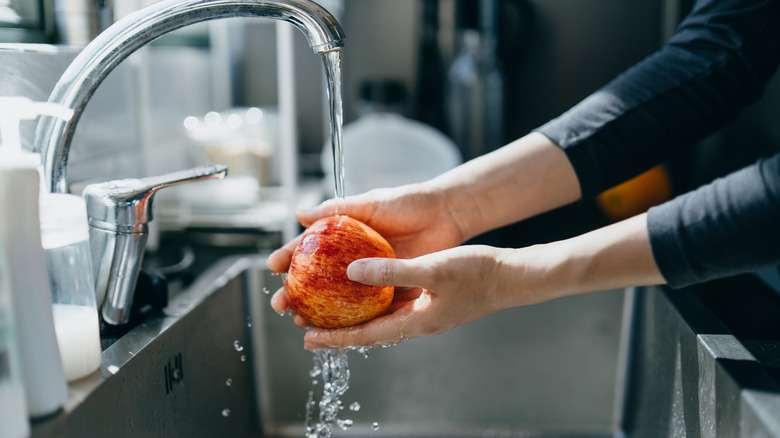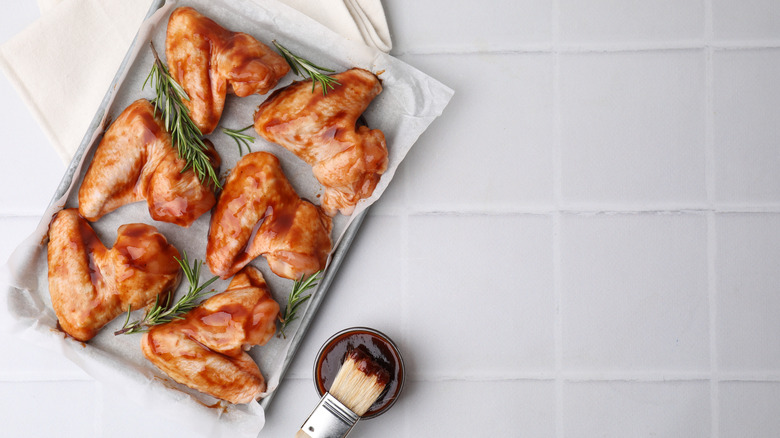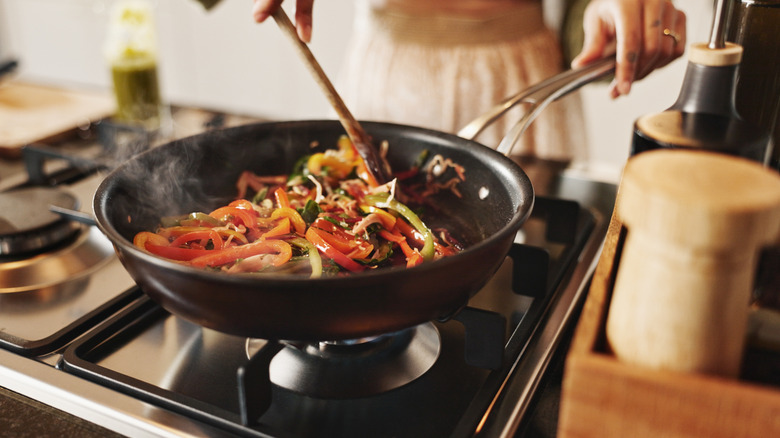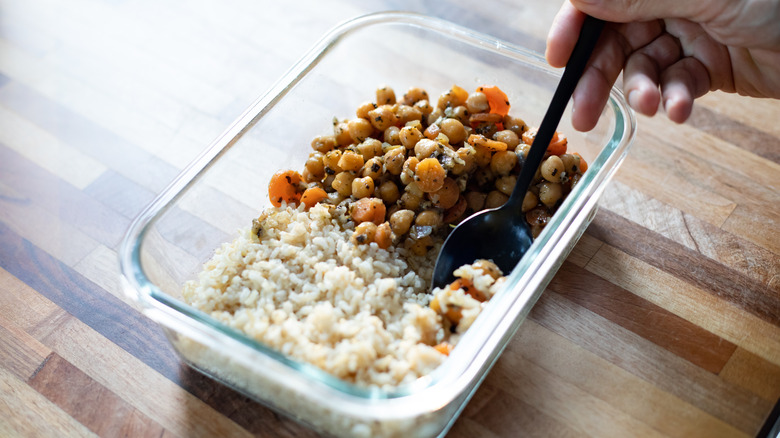12 Common Kitchen Habits That Could Give You Food Poisoning
Kitchen hygiene doesn't just affect the quality of meals; it plays a key role in stopping the spread of harmful pathogens. Many surfaces we touch on an everyday basis are contaminated with germs, while raw meat and poultry often harbor dangerous bacteria. This is why failing to follow standard kitchen safety protocols can easily lead to dangerous foodborne illnesses such as listeriosis, salmonellosis, and E. coli.
Despite the potential dangers, many home chefs still engage in food handling practices that increase the chances of contamination. In fact, the Centers for Disease Control and Prevention estimates that approximately 48 million people in the U.S. suffer from foodborne illness annually, with around 128,000 of those cases requiring hospitalization.
From short-cuts like skipping handwashing to reusing dirty utensils, seemingly harmless oversights can lead to serious cases of food poisoning. Luckily, most of these risks can be easily prevented. All that's required is a little forethought and simple preventive steps. To learn how home chefs can avoid contamination — and trips to the doctor — we asked several food experts for their insights. Keep reading to discover the most common kitchen habits that could put your health at risk — and how to prevent them — from Kimberly Lock, a professionally trained chef, experienced event planner, and the founder of Fifth Fork; Sandra Eskin, CEO of Stop Foodborne Illness and former deputy undersecretary of food safety at the USDA; and Chloe Hammond, the head chef at Asana Lodge, a residential rehabilitation center in the U.K.
Forgetting to wash your hands before preparing food
As simple as it sounds, forgetting to wash your hands before preparing food is a mistake that can be as costly as it is easy to avoid. Kimberly Lock says that handwashing is the single biggest thing you can do to prevent the spread of bacteria. "Think about every surface you may have touched in the last hour," she says. "Now imagine how many germs you have picked up in doing so — especially if any of these were public spaces where you have no control. You do not want to transfer any of these germs to your food, especially if you are preparing food that won't be cooked!"
While most harmful pathogens are killed when food is subjected to high temperatures for a certain period of time, it doesn't mean that preparing food with unwashed hands won't result in illness. Certain foodborne bacteria, such as Staphylococcus, produce toxins that can survive high temperatures.
The problem isn't just limited to skipping handwashing. Washing them carelessly can be just as dangerous. A 2023 study by the USDA's Food Safety and Inspection Service revealed that improper handwashing was rampant, with participants washing their hands incorrectly 97% of the time. The research also revealed that 48% of participants who didn't wash their hands adequately transferred bacteria to spice containers. To highlight just how crucial handwashing technique is, Lock advises that "20 seconds is all you need with soap — and it does not need to be antibacterial soap!"
Cutting raw meat and vegetables on the same cutting board
Given that many dishes — whether that be a beef and broccoli stir-fry or a chicken salad – call for smaller pieces of meat or poultry, cutting boards are an essential part of any kitchen setup. However, they can also be a prime source of cross-contamination, particularly if you are slicing both raw proteins and produce. Sandra Eskin believes that when it comes to cross-contamination, prevention is much better than a cure. She says, "You should use separate, clean boards for different foods, such as one for raw meat, poultry, or seafood, and one for fresh produce."
According to Kimberly Lock, using separate cutting boards for different ingredients is crucial, even if you are planning to cook the produce, since vegetables are often cooked for less time than meat. "You wouldn't put slices of raw chicken, fish, or pork on top of your favorite salad and eat it, would you?" she says to drive the point home. "On top of this, I always wash my meat-cutting board immediately, so I don't give the bacteria present time to multiply. I wash it with hot soapy water twice (three times if it had raw chicken on it), but this is probably overkill. That said, no one I've cooked for has ever gotten ill!"
Thawing frozen meat and poultry on the kitchen counter
Many home chefs store meat and poultry in the freezer to prevent spoilage and ensure that they always have it on hand when the mood strikes. While this is a convenient solution, the protein should be thawed before being placed on the stove or in the oven to ensure that it cooks evenly.
Some mistakenly believe that leaving meat or poultry out on the kitchen counter is a safe way of defrosting, when in fact it can lead to the growth of bacteria, as highlighted by Chloe Hammond. "The outer layers of the meat quickly rise into the danger zone," she explains, referring to temperatures between 5 degrees Celsius and 63 degrees Celsius. She adds, "That's where bacteria multiply rapidly, and then the center is still frozen."
To prevent the growth of harmful bacteria, it's best to thaw meat and poultry in the refrigerator overnight. Since this isn't always possible — especially if you are short on time — there are other safe defrosting techniques that can help speed things up. These include placing the protein in a sealed bag and thawing it in a pot of cold water or by using the defrost function in the microwave. If you choose the microwave method, the dos and don'ts of thawing meat in the microwave dictate that the meat should be cooked immediately afterward.
Undercooking meat, poultry, or seafood
Raw meat, poultry, and seafood can be contaminated with harmful bacteria, such as E. coli, Salmonella, and Listeria. Luckily, cooking the protein to the recommended internal temperature significantly reduces the risk of any foodborne illnesses. Sandra Eskin sums this up, saying, "When these foods are not cooked to recommended minimum internal cooking temperatures, harmful bacteria can multiply and make you sick. You cannot determine that a food is done cooking by giving it a good look: you should, instead, use a food thermometer to measure doneness."
Different food types have different minimum internal cooking temperatures because the types of harmful bacteria can vary from one food to another. For instance, beef, pork, veal, and lamb should be cooked until they reach 145 degrees Fahrenheit and allowed to rest for three minutes. For ground meats, this temperature increases to 160 degrees Fahrenheit. Meanwhile, poultry should always reach 165 degrees Fahrenheit, whether it's the whole bird, breasts, wings, or thighs. Finally, fish and shellfish are considered safe at 145 degrees Fahrenheit.
Overpacking the refrigerator
While it can be incredibly tempting to overload the refrigerator with food, especially after a trip to the grocery store, crowding the fridge shelves can lead to serious safety issues, as explained by Chloe Hammond. "If your fridge is stuffed full, the cold air can't circulate properly and the temperature may rise above the safe level. ... This means foods will spoil faster and bacteria can grow," she says.
According to the USDA, the maximum safe temperature for a refrigerator is up to 40 degrees Fahrenheit. Anything above this constitutes a potential risk. As such, it's important to check the internal temperature of your fridge on a regular basis. Most refrigerators come with a built-in gauge, which can be consulted as a general guide, but relying solely on digital readouts inside the fridge could be potentially misleading. As mentioned by Hammond, it's also worth checking the temperature of your fridge with a kitchen thermometer, as the built-in ones aren't always particularly accurate.
Keeping raw meat on the top shelf of the refrigerator
Home refrigerators feature different sections specifically designed to keep different food types fresh longer. For instance, the inside of the fridge door is perfect for storing condiments, dressings, and bottles of wine and soda. Despite the built-in egg holder that's typically located there, you should never store eggs in the refrigerator door because the constant opening and closing of the unit can cause fluctuating temperatures. Similarly, the crisper drawers are ideal for storing fruit and vegetables because they keep them in a humidity-controlled environment.
The refrigerator setup can also help prevent cross-contamination by keeping raw meat and poultry separate from ready-to-eat items — that is, if you know where to place them. Kimberly Lock says that raw meat should always be stored on the bottom shelf of the fridge. "Storing [meat] on the top shelf allows contamination to anything below it as you take the raw meat in and out of the fridge. Microscopic splatters can spread bacteria and lead to foodborne illness
Rinsing raw chicken in the sink
Some home chefs believe that washing raw poultry in the sink removes bacteria and makes the chicken safer to eat. Others think that rinsing may help to get rid of any slimy residue or blood on the poultry. Whatever the reason for the practice, cleaning chicken under running water is counterproductive. Chloe Hammond highlights this misconception, saying, "Many people think they're washing away bacteria doing this, but they're actually spreading it. Water droplets can splash bacteria like Campylobacter onto worktops, utensils, and other foods. Proper cooking is what kills bacteria, so washing isn't necessary, and it actually increases the risk of cross-contamination!"
So, how do you properly deal with raw chicken? The key lies in keeping it separate from other foods and washing your hands and surfaces thoroughly. Kimberly Lock offers clear, practical advice about reducing the chances of cross-contamination. "Simply pull your chicken from its packaging and place it directly into the cooking or marinating container or onto your dedicated meat cutting board, throw away the packaging and wash your hands," she advises.
Eating raw dough or batter containing eggs or flour
While sneaking a bite of raw cake batter or cookie dough might feel like an impromptu treat, it can actually expose you and your family to foodborne pathogens. The reason for this lies in the uncooked ingredients, which might harbor harmful bacteria. Sandra Eskin explains this, saying, "Undercooked eggs can be contaminated with Salmonella enteritis, and foodborne illnesses have been linked to flour contaminated with E.coli O157:H7 infections. Wait until the dough or batter has been fully baked (cooking kills bacteria) and then enjoy."
While many home bakers know that raw eggs carry Salmonella, not as many are aware that raw flour has been tied to multiple E. coli outbreaks. This is because it hasn't been treated to kill the germs that could have contaminated the wheat during the growing or manufacturing process. Even ready-made baking mixes can make people sick if they contain raw flour. That said, some brownie batters and cookie dough are made with heat-treated flour and pasteurized eggs, making them safe to eat without baking. Always check the product label for safety instructions if you are unsure.
Not rinsing vegetables and fruit
Whether you buy your fruit and vegetables at the supermarket, a farmer's market, or even grow your own, cleaning them is as simple as it is important. There are many reasons for this, as summarized by Sandra Eskin. "Washing produce before you eat it is necessary because bacteria can often contaminate the outer layers of produce (including rinds)," she says. "Also, cutting produce before rinsing it can transfer bacteria from the outside to the inside of the produce item." This means that even an unwashed fruit or vegetable that has been peeled can lead to a foodborne illness.
For best results, wash your hands before rinsing the fruit and vegetables under running water. If the produce has any bruises or damaged areas, cut these away with a sharp knife. You don't need to wash fruit and vegetables with soap or special cleaning solutions — running water is all you need to safely remove dirt, germs, and pesticide residue. Firm produce, such as melons and cucumbers, can be gently scrubbed with a brush. Once rinsed, dry the fruit and vegetables with a paper towel or cloth.
Reusing marinades from raw meat on cooked food
Cross-contamination is one of the greatest hazards in the kitchen. Even trace amounts of harmful bacteria can be easily transferred from raw foods to ready-to-eat items, potentially putting you and your loved ones at risk. Washing hands and utensils may seem like the clear solution, but cross-contamination can occur just as easily through marinades.
Marinating meat and poultry has several benefits. It doesn't just infuse the protein with the flavors of spices, herbs, and aromatics, but also helps tenderize tough cuts of meat by breaking down muscle proteins. While the results can be delicious, reusing a marinade that has been in contact with raw meat or poultry is risky business, as highlighted by Kimberly Lock. "While the meat was marinating, any bacteria [were] transferred to the marinade. The only thing you can do with the marinade is cook the meat in it," she says. "You have three options for how to treat your marinade after the meat is taken out of it. One, just toss it out; two, use a meat injector to inject the remaining marinade into the meat; or three, pour it over the meat at the start of the cooking process and let it cook the entire time the meat cooks."
Cooking with recalled food products or ingredients
According to Food Safety Net Services, there were 296 food recalls in the U.S. in 2024, resulting in 1,392 foodborne illnesses, 487 hospitalizations, and 19 deaths. Some of the most common reasons for food recalls include the failure to list allergens on labels, bacterial contamination, and the presence of foreign objects such as glass or plastic fragments.
Sandra Eskin emphasizes that staying aware and acting quickly are key to preventing foodborne illnesses associated with tainted products. "Pay attention to reports announcing a food product recall, and check your pantry, refrigerator, or freezer. If you find one, either discard it or take it to the supermarket where you purchased it for a refund," she advises. There are several practical ways home chefs can keep themselves updated about food recalls, including signing up for free FDA and USDA FSIS email alerts. Another valuable resource is the Recalls.gov website, which aggregates recall information.
Not storing and reheating leftovers property
There are very good reasons why many of us keep leftovers rather than toss them in the bin. Holding onto leftovers reduces food waste, saves money, and is a convenient, quick option when we don't have time to cook. That said, leftovers still need to be stored and reheated properly to prevent food poisoning.
Firstly, leftovers shouldn't be kept in the refrigerator for longer than three to four days. Each time food is cooled and reheated, there is a window when it passes through the danger zone — in other words, when it sits at a temperature between 40 and 140 degrees Fahrenheit, which is where bacteria multiply more rapidly. As such, it's important to reheat leftovers until they reach the internal temperature of 165 degrees Fahrenheit to kill any harmful pathogens.
If reheating food in the microwave, rotate it to prevent any hotspots and ensure even heating throughout the entire dish. In addition, when using the oven to reheat meat or poultry, be sure to set it to at least 325 degrees Fahrenheit.
